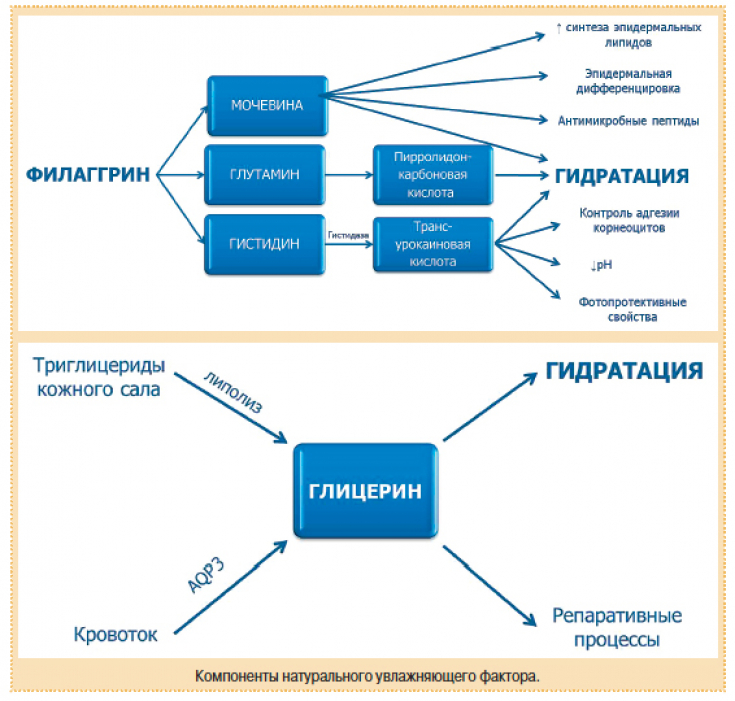Protection against the action of external physical and chemical agents and the aggression of microorganisms, regulation of transepidermal moisture loss are the main functions of the skin. Their implementation is possible due to the special structure of the skin barrier, an important structural element of which is a protein such as filaggrin.
It contributes to the maintenance of normal pH, moisture and protection of the skin from microbial agents, and is also important for controlling the selective permeability of the epidermis. Violations in the structure of filaggrin can lead to the development of eczema and atopic dermatitis. Read more about how filaggrin deficiency affects skin function on estet-portal.com in this article.
Filaggrin: protein mutation – cause of atopic dermatitis
In 2006, a group of scientists determined that mutations in the genes encoding filaggrin (filament aggregating protein) lead to the development of ichthyosis vulgaris.
A mutation in the filaggrin gene results in:
• higher risk of early disease onset;
• persistence of atopic dermatitis in adulthood;
• increased risk of allergy with percutaneous sensitization.
Filaggrin deficiency correlates with risk of eczema.
In parallel, scientists have found that these mutations, which occur in 10% of people, are the main genetic predisposing factor in the development of atopic dermatitis. These studies provide evidence that disruption of the skin barrier is a major event in the pathophysiology of eczema.
Functions and structure of the skin: composition of the lipid barrier of the skin
Filaggrin: the unique functions of a protein
The main protein component of keratohyalin granules in keratinocytes of the granular layer of the epidermis is the giant polyprotein profilaggrin. When the stratum granulosa cells undergo terminal differentiation to form stratum corneum scales, profilaggrin is rapidly cleaved into multiple copies of the filaggrin monomer, which binds to and condenses the keratin cytoskeleton, thereby facilitating cellular contraction.

In the stratum corneum, filaggrin is broken down to form a natural moisturizing factor, a pool of amino acids and their derivatives. Therefore, filaggrin is essential for normal biogenesis and physiology of the stratum corneum.
Read the latest articles in Telegram!
Association of filaggrin mutation with other allergic diseases
Filaggrin mutations were found to be a major genetic risk factor for asthma per se, but further analysis showed that all of the observed association was with the asthma plus eczema group. In the asthma-only group, there was no association with impaired filaggrin function.

This result demonstrates that there are at least two forms of asthma - one due to sensitization through the skin barrier, the other due to some other unknown mechanism.
Because filaggrin is not expressed in the epithelium of the respiratory tract, this has led to the hypothesis that filaggrin deficiency leads to atopy through percutaneous activation of the immune response, which can then manifest itself in other organs remote from the skin, such as the lungs.
Genetic associations of filaggrin mutations with hay fever and food allergy, additional phenotypic markers of atopic diathesis, have also been reported.
Currently, the focus of scientists is on finding pharmacological ways to improve the function of the skin barrier.
Better understanding of the pathogenesis of atopic dermatitis and eczema allows the development of more effective treatments for these diseases.
You may also be interested in: The ABC of the skin for a cosmetologist: the structure of the epidermis







Add a comment